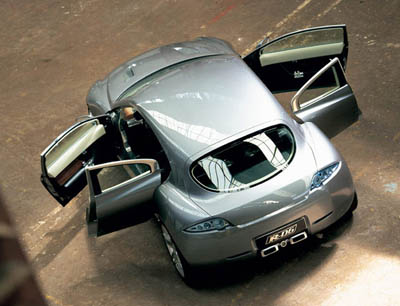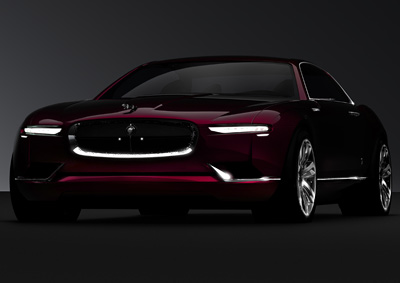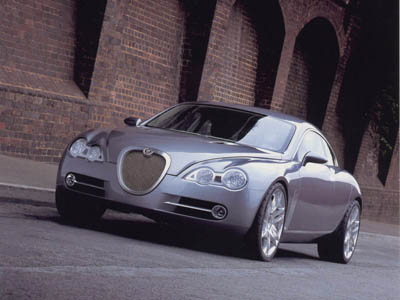Concept Cars:Jaguar C-X16

We first got wind of the C-X16 when Jaguar released a preview sketch showing their new two-seater in a profile sketch. Now, just a week before its unveiling at Frankfurt, Jaguar have provided lots more juicy photos and some of the important numbers. As mentioned before, Jaguar have labeled the C-X16 concept as a “Production Concept”. Good news if you like what you see. Bad news if you were hoping for something a bit more E-typey.The Jaguar C-X16 Concept is based on an aluminium chassis – most likely a cut down version of that used on the XK. Measuring just 4.4 metres (14.4 feet), the C-X16 concept is the smallest Jaguar since 1954 and the Jaguar XK120. Due to its compact dimensions and lightweight architecture, the C-X16 posts some impressive performance figures, and the handling should be even sharper than that of the larger XK.
Powering the Jaguar C-X16 Concept is a hybrid drivetrain. But it’s more like the hybrid KERS setup found in some F1 cars, than the technology used in Prii (the official plural for Prius – seriously). Mounted up front is a 3.0 litre V6 engine which develops 375 horsepower and 332 lb-ft (450 Nm) of torque. For most of the time that’s more than enough poke to keep the small cat purring along quite nicely. But when required the driver can call on an additional 93 horsepower – courtesy of an electric motor integrated into the 8-speed semi-automatic gearbox. This push-to-pass feature is activated by a small red button on the steering wheel.
When both the V6 and the electric motor are used in harmony, the C-X16 can hit 62 mph (100km/h) in 4.4 seconds, and accelerate from 50-75 mph in just 2.1 seconds. Top speed is 186 mph. Despite all that, the C-X16 can indeed be run in pure electric mode at speeds of up to 50 mph to conserve fuel.
Visually, the Jaguar C-X16 isn’t a bad looking car, although it perhaps doesn’t have the effortless grace of many of its predecessors. There will more than likely be a few tweaks on the way to production, however the overall shape of the car should remain fairly similar. If the designers can make the car a little less busy at the front before it hits the showrooms then that would be time well spent.
The interior is a little bit of a disappointment. However the color choices of bright red leather and cool blue lighting don’t exactly do it justice. Ditch the 1990s modified car color scheme and it’ll instantly look a lot more sophisticated. In fact we’ve had a play with one of the interior images to prove it.

The Jaguar RD-6 was built by a small team of designers in England. The R-D6 was a break from tradition for Jaguar, the diesel engine being one of the more unusual features, although diesel engines are now appearing regularly in luxury marques. The body of the RD-6 has classic Jaguar design features whilst also maintaining a sense of personal identity. The rear lights of the RD-6 have contemporary Mazda design written all over them. |



No comments:
Post a Comment